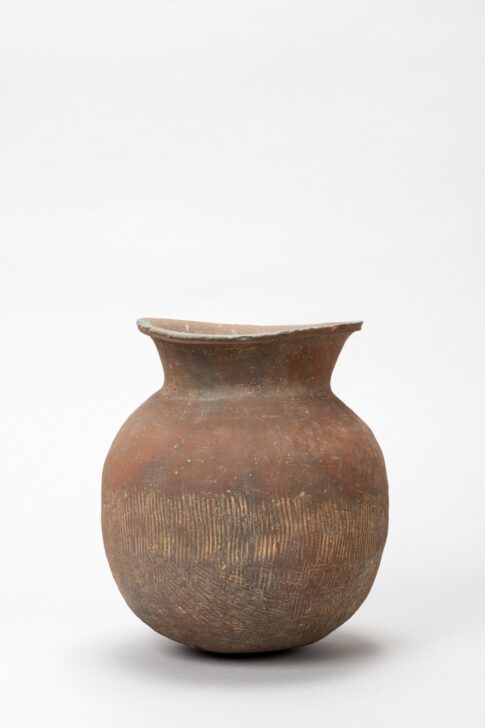Round-bottomed storage jar with rolled, uneven rim
Korean

Description
Subject Matter:
The reddish brown earthenware started to be made in BC 2C. It was also made in BC 3C with the dark grayish-blue stoneware. But it decreased considerably in BC 4C because of the rise of the grayish-blue stoneware. It was usually made by the use of potter’s wheel and was designed with the vertical line. The difference of the reddish brown earthenware and the grayish-blue stoneware is the difference of the degree when firing.
Physical Description:
This reddish brown earthenware jar has a globular body and long, widely flared neck. The below surface of the body is adorned with beaten parallel line.
This is a gray-brown, long-necked, high-fired stoneware jar with a round bottom. Its neck extends up in a straight line before flaring out suddenly near the rim, the edge of which is slightly concave. The body is globular and widest at its middle. Below this part of the vessel are decorations consisting of vertical paddled patterns that are parallel or superimposed. It is likely that the paddled pattern was also applied to the upper and middle parts of the vessel body, but was later erased during the rotation and water smoothing process. The inner surface of the body shows traces of rotation and water smoothing, along with fingerprint marks made in a vertical direction.
[Korean Collection, University of Michigan Museum of Art (2017) p. 46]
Usage Rights:
If you are interested in using an image for a publication, please visit https://umma.umich.edu/request-image/ for more information and to fill out the online Image Rights and Reproductions Request Form.